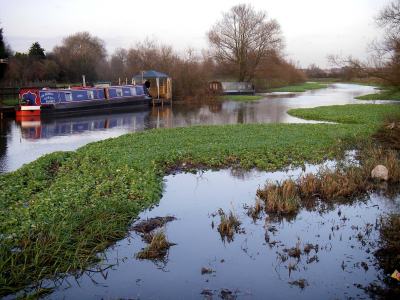Experts at the Environment Agency are urging people not to introduce alien plants into garden ponds or other water bodies, to help prevent the loss of precious native wildlife.
Several non-native species, which can often be bought in garden centres, can cause devastation to wildlife as they grow at such an alarming rate. Not only are garden ponds affected, but careless disposal of pond waste and water means these plants can get into local waters too.
As they begin to cover the water’s surface they stop light getting into the water, killing underlying plants and removing any oxygen. This can cause the death of fish, frogs, toads, newts and invertebrates and can cause a hazard for children, pets and livestock who may mistake the dense green surface for grass or gravel and end up in the water.
The main culprits to look out for are:
Australian swamp stonecrop (Crassula helmsii)
Originally from Tasmania, this plant spreads rapidly to form dense, interwoven mats and has driven some rare species to extinction. It is easily spread and grows over other aquatic vegetation, killing native plants and removing oxygen vital for fish and invertebrates.
Floating Pennywort (Hydrocotyle ranunculoides)
Floating Pennywort causes problems wherever it is introduced, often costing thousands of pounds worth of damage. This plant blocks waterways, causes flooding, chokes out all submerged and most riverside plants and prevents navigation and fishing.
Parrot’s Feather (Myriophyllum aquaticum)
Widely available in garden centres, Parrot’s feather grows so quickly that it can cover large ponds within a year, killing plants and removing oxygen essential for fish and amphibians.
Water fern (Azolla filiculoides)
Dense mats of water fern can completely cover the surface of a pond or river, reducing light beneath the surface and killing submerged plants and fish. These mats can also be mistaken for grass by animals and children, who risk drowning if they try to walk on the surface. Floating rafts of water fern can also block sluices and locks.
 Chris Extence, ecological appraisal specialist for the Environment Agency, said: ‘These species can be devastating to local pond and river wildlife, so we are urging people not to buy these or any other non-native species. Good alternatives such as spiked water milfoil, hornwort and marsh pennywort are widely available and just as attractive.
Chris Extence, ecological appraisal specialist for the Environment Agency, said: ‘These species can be devastating to local pond and river wildlife, so we are urging people not to buy these or any other non-native species. Good alternatives such as spiked water milfoil, hornwort and marsh pennywort are widely available and just as attractive.
‘If you have any of these non-native plants in your garden pond, then the best way to get rid of them is to pull them out by hand, then dry and burn them, or compost them. Don’t throw them away, or put them near rivers or ponds, as they can have severe consequences for local wildlife.’
The Environment Agency is currently working to remove these and other species from rivers to help meet the requirements of the Water Framework Directive (WFD). The WFD is a piece of European legislation that aims to establish better ways to protect our water environment and focus on the ‘health’ of the water around us. Programmes are underway to remove alien species from particular sections of water, but one of the main things which will make a difference is if people stop adding these plants to their ponds
For more information on how to recognise and control these invasive species, visit www.environment-agency.gov.uk/subjects/conservation or the Centre for Aquatic Plant management at www.capm.org.uk









